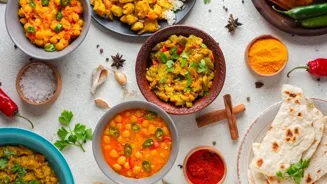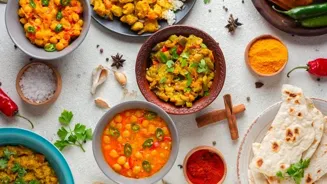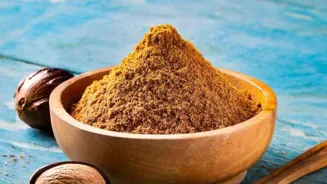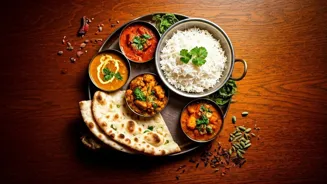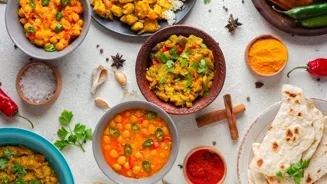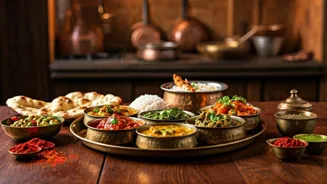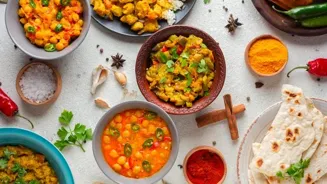Dive into the world of Indian vegetarian curries, a flavorful journey through diverse traditions and tantalizing recipes. Explore the rich heritage and culinary artistry of India's vibrant plant-based
cuisine
The aroma of spices simmering in ghee, the vibrant colors of vegetables dancing in a flavorful gravy - these are the hallmarks of Indian vegetarian curries.
India, a land renowned for its diverse culture and culinary traditions, offers a staggering array of vegetarian curries that cater to every palate. From the creamy indulgence of paneer butter masala to the earthy goodness of chana masala, the options are endless.
This article delves into the fascinating world of Indian vegetarian curries, exploring recipes that are sure to tantalize your taste buds. Whether you are a seasoned cook or a novice in the kitchen, get ready to embark on a delicious journey through the heart of Indian cuisine.
The sheer variety of vegetarian curries in India is a testament to the country's rich agricultural heritage and the ingenuity of its cooks.
Indian vegetarian curries vary by region in ingredients and flavors
Indian vegetarian curries are not just about taste; they are also about tradition and culture. Each region of India boasts its own unique style of curry preparation, influenced by local ingredients and culinary practices.
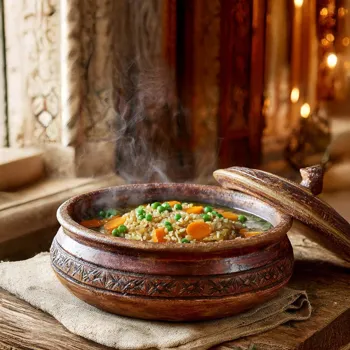
For instance, South Indian curries often feature coconut milk, tamarind, and curry leaves, lending them a distinct tangy and aromatic flavor. In contrast, North Indian curries tend to be richer and creamier, with a heavy reliance on dairy products such as cream, yogurt, and butter.
The use of spices is also a key differentiator, with each region having its own signature spice blends. Whether it's the fiery red chili powders of Rajasthan or the subtle warmth of garam masala in the North, spices play a crucial role in defining the flavor profile of Indian vegetarian curries.
The choice of vegetables also varies widely across regions, reflecting the local produce available.
Variety of Indian vegetarian curries, from dal to vegetable dishes
One of the most popular and versatile vegetarian curries in India is dal. Made from lentils or split peas, dal comes in countless variations, each with its own unique flavor and texture. Dal makhani, a creamy and buttery dal made with black lentils and kidney beans, is a North Indian classic.
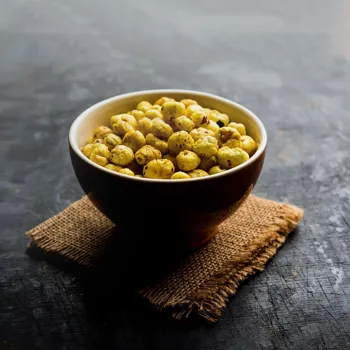
Moong dal tadka, a simple yet flavorful dal made with yellow lentils and tempered with spices, is a staple in many Indian homes. Chana masala, a spicy and tangy chickpea curry, is another perennial favorite, often served with rice or naan bread.
Vegetable curries are equally diverse, ranging from simple potato and cauliflower curries to more elaborate preparations featuring an assortment of seasonal vegetables.
Aloo gobi, a classic combination of potatoes and cauliflower cooked with ginger, garlic, and spices, is a comforting and satisfying dish. Baingan bharta, made with smoked eggplant mashed and cooked with tomatoes, onions, and spices, offers a smoky and earthy flavor.
Paneer curries offer versatility in Indian vegetarian cuisine
Paneer, a fresh cheese popular in Indian cuisine, is a frequent ingredient in vegetarian curries. Paneer butter masala, a rich and creamy curry made with paneer cubes in a tomato-based gravy, is perhaps the most well-known paneer dish.
Palak paneer, made with paneer and spinach, combines the richness of cheese with the health benefits of leafy greens. Mattar paneer, made with paneer and green peas, is a simple yet flavorful curry that is perfect for a weeknight meal.
Vegetarian curries can be customized to suit different dietary preferences and spice levels. For those who prefer a milder flavor, the amount of chili powder can be reduced, or ingredients like coconut milk can be added to temper the heat.
For those who enjoy a spicier kick, extra chili peppers or a dash of cayenne pepper can be added.
Indian vegetarian curries: steps, ingredients, slow cooking for rich flavor
The preparation of Indian vegetarian curries typically involves several steps. First, a base of onions, ginger, and garlic is sautéed in oil or ghee until golden brown and fragrant. Next, spices are added and roasted briefly to release their aroma.
Then, vegetables, lentils, or paneer are added and cooked until tender. Finally, a gravy made from tomatoes, yogurt, or coconut milk is added, and the curry is simmered until the flavors have melded together.
Some curries are also garnished with fresh herbs like cilantro or coriander leaves, adding a touch of freshness and color. The key to a successful Indian vegetarian curry is to use high-quality ingredients and to allow the flavors to develop slowly.
The longer the curry simmers, the richer and more complex the flavor will be.
Indian vegetarian curries are a flavorful adventure through India
Indian vegetarian curries are a celebration of flavors, colors, and textures. They are a testament to the ingenuity and creativity of Indian cooks, who have transformed simple ingredients into culinary masterpieces.
Whether you are looking for a comforting and familiar dish or an adventurous and exotic flavor, there is an Indian vegetarian curry out there for you. So, gather your spices, chop your vegetables, and get ready to embark on a delicious culinary adventure through the heart of India.
Experiment with different recipes, adjust the spice levels to your liking, and most importantly, have fun! With a little practice and patience, you'll be able to create authentic and flavorful Indian vegetarian curries that will impress your family and friends.
And not only will you and your friends love it but you will get a taste of india too.
AI Generated Content. Glance/InMobi shall have no liability for the content